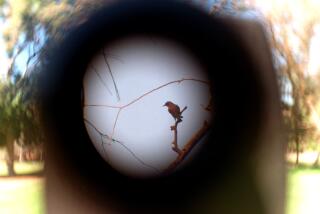Portrait of a Meadow
Ask botanists why they draw plants instead of photographing them and they’ll tell you that you can’t understand how a plant works until you draw it. Form follows function.
Ask science publishers why they so often prefer illustrations to photographs and they’ll say the artist can subtly emphasize traits that are critical to identifying a plant.
Ask 95-year-old painter Anne Ophelia Dowden why she dedicated her career to botanical illustration and she’ll reply that it was to show people how nature works. “The world is the most beautiful, intricate network,” she explains in a phone interview from her home in Colorado. “My job was to portray part of that network.”
Between 1950 and 1990, Dowden wrote, designed and illustrated 11 books and was brought in to illustrate nine more. Each was dedicated to drawing our eyes to everyday wonders: wild greens in the city, poisonous plants in our paths and, her favorite, the timeless rituals of pollination. In all, a meadow’s worth of flowers fell from her brush--not in some country studio but in a two-room apartment in New York City.
Dowden’s work is now the subject of an exhibition at the Hunt Institute for Botanical Documentation at Carnegie Mellon University in Pittsburgh. But don’t go to it, or seek out the catalog or her books, expecting the work of an Audubon or Mark Catesby. This naturalist’s work is part chintz curtain, part educational illustration and part Gray’s Anatomy.
She was born Anne Ophelia Todd in Denver in 1907 and raised in Boulder. Her childhood passion was roaming the Front Range. English neighbors, biologists who taught at the local high school and university, became her earliest tutors.
“Every time my sister or I would find a bug or a flower, we’d run down and pound on their door to find out what it was,” Dowden recalls. She began painting these bugs and flowers.
By 16, she was producing medical drawings for her father, a pathologist at the University of Colorado. By 20 she was studying art at Carnegie Institute of Technology in Pittsburgh (now Carnegie Mellon University) and by 23 she had assumed the first of two jobs teaching art, at the Pratt Institute in Brooklyn. Her second teaching job was at Manhattanville College, then in uptown Manhattan, now in Purchase, N.Y.
Soon after her move to New York, a fellow Carnegie art student, Raymond Dowden, followed and the two married. He joined the staff of Cooper Union School of Art and Architecture in 1936, eventually becoming head of the art department.
“He was a very good painter himself. I used to scold him for devoting so much of his time to his students,” she says. But she, too, enjoyed teaching: “Pedagogy suited me,” she recalls. Meanwhile, she was intent on remaining a working artist. She took courses at the Art Students League and joined a group that in 1933 did a mural for the Chicago World’s Fair. An amused Dowden recalls that they “somewhat grandiloquently” called themselves “the American Design Group” and, “with no experience, started designing wallpapers and drapery fabrics.”
“I did an awful lot of chintzes and things like that,” she says. “For that, the research material was all floral. Botany had always been my hobby. I began drawing more and more flowers.” In 1952, this led to a job for Life magazine illustrating edible wild plants, milkweed sprouts and the like. Soon Natural History and Audubon magazines were also publishing her drawings.
She gave up teaching, turned full time botanical drawing and sought out scientists to ensure that her work was accurate down to every last stamen and pistil. On one project, drawing Western flowers like flax and columbine in New York, using only dried specimens and photographs, had her in agony.
“I hope I didn’t pull any botanical boners,” she confessed in a letter to a scientist advising her on the project. In New York, she sought out Peter Nelson, then a botanist at Brooklyn College, for advice. He remembers her as shy but determined and absolutely unflappable. “She wasn’t in the least bothered if I said, ‘It doesn’t go that way; it goes this,’ ” he says.
Her exactitude involved what Dowden jokingly dubbed “the world’s slowest working method.” During summer holidays, she would make exhaustive field sketches of flowers. Back in New York, where she and her husband lived on the edge of Greenwich Village, she would depend on specimens sent to her in the mail or donated by botanic gardens. “What I liked best was to get the specimens, bring them home in bags, put them in the bathtub and paint them like mad before they all died,” she says.
Where did she and her husband bathe? “We took sponge baths.”
“I get the impression that her husband was very patient,” says Nelson.
The magazine illustrations led to a long association with Thomas Crowell publishers (later HarperCollins), where she was promptly shown to the children’s department. “They were the only ones that did illustrated books,” explains Dowden.
She tackled book production with her by now trademark intensity, devoting as much as five years research into children’s books. These include “The Secret Life of Flowers” (1964), “Wild Green Things in the City: A Book of Weeds” (1972), “The Blossom on the Bough: A Book of Trees” (1975) and “The Clover & the Bee: A Book of Pollination” (1990). Nelson read the proofs and scanned the drawings of at least three of them. “She put every single line of her books in place,” he says.
In the lead-up to one of her last books, “The Clover & the Bee,” she delightedly reported to her publisher, “I’m doing a lot of prowling ... spying on insects and capturing specimens.”
It addressed her favorite subject: pollination. She begins the book: “No subject in the realm of nature is closer to the heart of life. None has more majestic implications--and none is more simply entertaining and downright amusing.”
Researching that book, matching honeybees, solitary bees, bumblebees, wasps, butterflies, moths, flies, beetles, birds and bats to saucer flowers, bells, tubes and trap flowers, required the patience of a statue. Nelson recalls her spending six weeks drawing only leg hairs of a bee.
She went to entomologist Louis Sorkin at the American Museum of Natural History in New York to make sure she had done the bugs justice. “I had other artists think they knew what they were doing and then I’d show them the animal,” he says. “She was able to see what the real one looked like, then realize how that would associate with drawings or photographs.”
In 1982, Dowden’s husband died. By 1990, after 60 years in New York, the Coloradan pined for the Rockies (“real mountains,” she says) and she returned to Boulder. In 1994, she finished her last book, on poisonous plants, after which not even her magnifying glasses could compensate for weakening eyesight.
She gave away all her brushes to art students at Denver Botanic Gardens. “There are always people who can use them, and they’re expensive!” she says.
Her paintings took so long to do, Dowden seldom parted with them, except to nearest and dearest. Nelson has one and calls it his most prized possession. However, four years ago, Dowden donated her life’s work to the Hunt Institute, part of her alma mater, Carnegie Mellon. The current exhibition marks her 95th birthday.
Dowden says that, had she stuck with pure painting, she would have been an abstract artist. She likes the emphasis placed on design in abstract art. But then she became preoccupied by flowers, weeds, the meandering of a bee. Though she doesn’t care for the word, she was an early environmentalist, of a sort.
“All we hear are environmentalists and their fights,” she says. “Many people think it’s a business of saving long-eared owls. What’s important is that the owls are part of an intricate system that has taken millions of years to evolve.”
Explaining this system in children’s books never paid well. She would have made more in upholstery, she sighs: “The joy, that’s the reward.”
“Anne Ophelia Todd Dowden: A Blossom on the Bough,” Hunt Institute for Botanical Documentation, Carnegie Mellon University, Pittsburgh, (412) 268-2434. Through Feb. 28, 2003.






